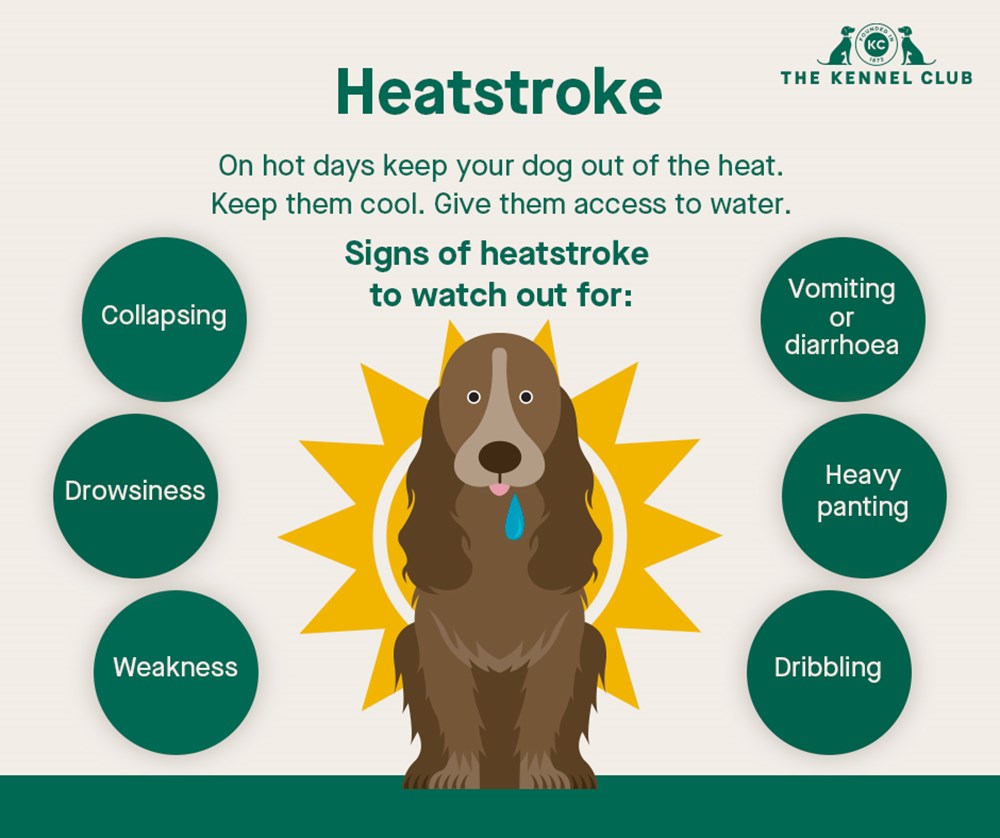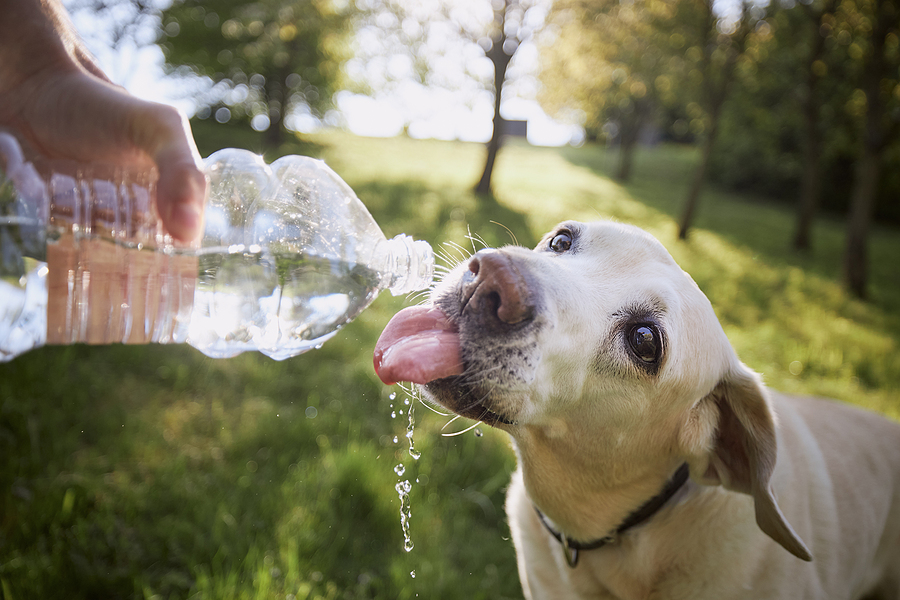Tips on how to recognise heatstroke in dogs and how to prevent it
Heat can kill dogs
With temperatures set to soar once again this month we look at how heat can affect dogs, how to recognise if your dog is suffering from heat stroke and how to minimise the risk.
Each year emergency vets treat hundreds of cases of heat stroke with some, heartbreakingly, ending in the death of the dog. Many are as a result of owners exercising their dogs in the heat of the day and simply not realising how hot it is and how it can affect them. It is so important that owners are aware of when their dog is at risk.
In very hot weather, even gentle exercise can lead to heatstroke, with nearly 70% of dogs with exercise-induced heatstroke becoming unwell after just going for a walk on a hot day.
How hot is too hot?
Common sense tells us if the outside temperature is over 30°C (86°F) then it is far too hot to be throwing a ball in the park for our dog but did you know that dogs can be at risk of heat stroke at lower temperatures too? Here is a general guide:
With an outdoor temperature of 32+°C heat stroke is a major risk regardless of size, condition or breed of dog.
As the temperature climbs to 28-31°C all dogs are at risk but these high temperatures could potentially be life-threatening for larger breeds and puppies as well as dogs which are flat faced or obese.
When the temperature reaches 24-27°C extreme caution should be taken as most dogs could find these temperatures very uncomfortable (particularly those which are large, obese, flat faced or very young)
Even at 20-23°C it could be deemed as too hot if your dog is exercised too rigorously, has an underlying health condition such as obesity or breathing difficulties.
Spotting the signs of heat stroke
Recognising the signs early, and seeking emergency treatment, can increase your dog’s chance of survival.
In the early stages of heat stroke, your dog is likely to appear restless and distressed. They may also pant heavily and drool. As their condition worsens they will begin to lose coordination and eventually collapse. Other signs of heat stroke include:
- breathing problems, particularly in flat-faced dogs
- tiredness
- stiffness or an unwillingness to move
- skin hot to touch
- unsteady on feet
- being sick, can be bloody
- upset stomach, can be bloody
- not walking in a straight line
- collapse
- racing heart
- glassy eyes
- gums turning bright red or bluish purple
- fitting
1 in 7 dogs treated by vets for heatstroke die. To give a dog with heatstroke the best chance of survival they need to be cooled down immediately and taken to a vet as soon as possible.

7 ways to avoid heat stroke
- Walk your dog in the early morning or evening and avoid the midday sun
- Always carry water and something for your dog to drink from
- Consider attaching a lead to a walking harness rather than to their collar. Leads that pull on a collar can press on their airways and stop them from cooling down as effectively.
- Pavements on hot days can burn your dog’s footpads, so try to avoid them. If it’s too painful for you to place the back of your hand on a pavement for seven seconds then it’s too painful for your dog to walk on.
- Always provide a cool, shaded area for your dog to relax in
- Never leave your dog in a parked car or hot, stuffy room, even for a short time
- Don’t overdo exercise during warm spells, regardless of the time of day.
Melina - Assistant Editor
Latest posts by Melina - Assistant Editor (see all)
- Asparagus and garlic prawn spaghetti - May 4, 2024
- Cream Cheese Orange Bars - May 2, 2024
- Top tips for hay fever sufferers - April 14, 2024
- Paysan Breton Cream Cheese Breakfast Wraps - April 12, 2024
- 4 Homemade Sweet Treats for Easter - March 24, 2024






















